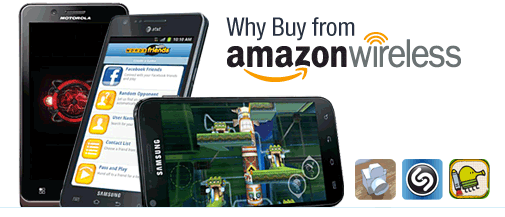AmazonWireless.com, Amazon’s dedicated shopping site for cell phone and tablet buyers, is finally exiting beta today, following its launch in July of 2009. The change in status may mean nothing to regular mobile shoppers, who have long known of and used the service to compare devices, or who were attracted there when Amazon ran crazy sales – like when it listed all its Verizon phones for just a penny, for example. It has also be known to offer some impressive discounts on flagship phones, such as the $199 Galaxy Nexus and the $111.11 Droid RAZR.
But Amazon hopes to get on the radar of all mainstream users as it goes public, which has led it to launch two new benefits for customers: a price-matching guarantee and $25 worth of free mobile apps with purchase.
The company says it will guarantee the best pricing on phones with service from all major carriers. Anyone finding a lower price for the same product with the same service plan within 14 days of their Amazon purchase will be credited the difference. And if Amazon lowers its own price within 14 days, the same benefit will also apply.(Amazon doesn’t say it would automatically credit you when it lowered its own pricing, so keep your eyes peeled.)
In addition, the site is now leveraging Amazon’s other mobile storefront – Appstore for Android – in order to offer new phone and tablet buyers free mobile apps. Any customer purchasing an Android phone will be able to choose from a selection of apps made available after they download the Amazon Appstore app onto their device. The deal includes popular titles, includingMahjong Artifacts ($4.99), Shazam Encore ($4.99), Office Suite Pro ($9.99) and more.
These apps will be made available right at checkout to customers, so they can be installed immediately after launching the Amazon Appstore on their device.
The news of the public “launch”of the website comes on the heels of another report, which says Amazon is now testing its own in-app payment system for its Appstore, which would allow developers to offer both one-off purchases as well as subscriptions through apps. Combined with its efforts to popularize the Kindle Fire as the only real iPad alternative, the move to create an enticing storefront to sell its own hardware devices, plus those of others, and then tap into the growing customer base involving Android owners, has positioned Amazon to do what Google has not yet – make Android a worthwhile business, both for developers and itself alike.
